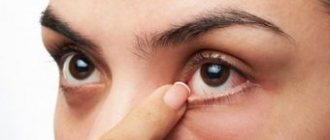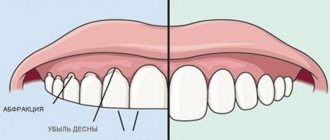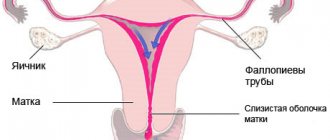Traumatologist-orthopedist
Shelepov
Alexander Sergeevich
12 years of experience
Doctor
Make an appointment
An accumulation of clots or liquid blood in the soft tissues of the body, formed due to rupture of blood vessels, is called a hematoma. The most common type of pathology is an ordinary bruise. However, this concept includes much more severe and complex cases that cannot be left without qualified medical care. Blood flowing from the vessel irritates the tissues surrounding it, resulting in pain, tissue swelling and other signs of developing inflammation. In addition, the hematoma compresses the tissues or organs located next to it, which can lead to the development of complications.
General information
The main cause of hematomas are bruises - closed injuries to soft tissues resulting from a blow or fall. A strong blow leads to rupture of the walls of small blood vessels, due to which blood begins to flow through the breakout sites into the subcutaneous tissue, soft tissues or body cavities. Hematomas form in different parts of the body - on the limbs, torso and even on the head. In addition to bruises, hematomas are caused by intense compression and stretching of tissues due to dislocations or fractures.
Small lesions, as a rule, do not require any treatment and resolve on their own within a few days. When large hematomas form, there is a risk of infection and the development of suppuration. Most often, hematomas form in representatives of younger age groups - children, adolescents and young people, who are characterized by high physical activity. Another “risk group” are people with increased fragility of the vascular wall, as well as with blood clotting disorders.
Contusion (bruise) of the eye
Most often, a contusion (or bruise) of the eye occurs due to a blow to the eyeball with some object. For example, with a fist during a fight or with a snowball during a game. The affected person feels a sharp pain in the eye, lacrimation appears, photophobia occurs, and visual acuity may sharply decrease.
If there is no rupture of the eyeball or a penetrating wound, then at the first moment the victim may not feel any consequences. But after some time, vision suddenly becomes worse. It is worth remembering that even seemingly minor eye injuries can lead to very serious complications. Therefore, you should not self-medicate under any circumstances. It is better to immediately seek medical help from an ophthalmologist. Only he, after the examination, will be able to prescribe the necessary treatment for you and monitor the condition of your eye.
What urgent measures need to be taken before visiting a doctor? To begin with, you need to provide the injured eye with absolute rest. To do this, completely eliminate movements and turns of the head, stop any, even minimal, physical activity (bending forward, lifting heavy objects, sudden movements). Next, you need to apply a sterile gauze bandage to the eye, which can be soaked in antibiotic eye drops (Levomycetin or Albucid). This will serve as a good prevention of infections.
Why does a hematoma change color?
Doctors identify three distinct stages of a hematoma through which it must go before completely disappearing. Each of them is characterized by a certain skin color, through which the hemorrhage is visible.
- Appearance of a bruise. Immediately after a soft tissue bruise, a sharp pain is felt, the area of skin in the damaged area becomes purplish-red and swells due to tissue swelling, then the red color gradually changes to blue. The red color comes from red blood cells containing large amounts of hemoglobin. After a few hours, hemoglobin begins to break down, and the bruise site turns blue. Due to swelling and inflammation of the tissue in the damaged area, the temperature rises.
- Greening. After two or three days, swelling and temperature decrease, the condition of the tissues more or less returns to normal, but minor pain when pressed remains. The blue tint of the skin gradually turns into a greenish color.
- Yellowing. By about the fifth day, the swelling completely disappears, the remaining hemoglobin disintegrates and is removed from the tissues. The site of the bruise becomes yellowish, then acquires its normal color.
Visual symptoms of hematomas are most clearly visible in cases where the effusion of blood occurs in the subcutaneous layer. If a clot forms in the deeper layers of soft tissue, then only a small but painful swelling is noticeable on the outside. Such formations are much more dangerous, since the process occurs unnoticed and can be accompanied by complications.
Are you experiencing symptoms of a hematoma?
Only a doctor can accurately diagnose the disease. Don't delay your consultation - call
Ways to get rid of bruises
Most often, the appearance of a bruise is preceded by a strong blow, which cannot be ignored. This injures small vessels, a small amount of blood flows out of them and permeates the subcutaneous tissue and lower layers of the skin. In response to injury, local swelling occurs - a protective reaction of the body. At this stage, the bruise is not yet visible, but you already need to take active action. The goal is to reduce tissue permeation with blood.
In order to quickly reduce swelling at the site of a bruise, it is necessary to use agents that cause vasospasm. Cooling with ice works well for this, but a frozen piece of meat wrapped in film and a thin towel will also work. It must be applied to the site of injury for 20 minutes. After cooling, the ice is removed, but the procedure can be repeated after 15-20 minutes. Constantly keeping the cold near the bruise is dangerous and can cause even more damage.
Home remedies can help relieve swelling. For this you can use:
- a compress made from a solution of vinegar or vodka;
- onion gruel with salt;
- applying a cut aloe leaf;
- half a raw potato.
Folk remedies against bruises can be used at an early stage, immediately after a bruise. A mixture of garlic and vinegar pulp and lavender essential oil, which should be applied to the injury site, are considered effective. But you need to be careful; minor bruises can be treated at home without the help of a doctor.
Types of damage
The faster a hematoma forms, the more difficult the recovery. Injuries of this type are divided into:
- lungs that develop within a day, accompanied by mild pain and not requiring special treatment;
- moderate severity, the appearance of which requires no more than 5-6 hours, accompanied by noticeable swelling and pain, worsening the motor function of the limb;
- severe, forming within 2 hours after a bruise, accompanied by dysfunction of the limb, acute pain and noticeable swelling.
Treatment of moderate and severe hematomas should be carried out under the supervision of a physician to eliminate possible negative consequences of injury.
In addition to the severity of the damage, there are other criteria for classifying hematomas:
- by depth of location - under the skin, under the mucous membrane, deep in the muscle tissue, under the fascia, etc.;
- according to the state of spilled blood - uncoagulated (fresh), coagulated and lysed (filled with old blood that is not capable of clotting);
- by the nature of blood distribution - diffuse (blood permeates the tissue and spreads quickly), cavitary (blood accumulates in the cavity between the tissues) and encysted (over time, the cavity filled with blood is surrounded by a “bag” of connective tissue);
- according to the condition of the vessel - pulsating (blood flows freely from the vessel and flows back) and non-pulsating (the rupture of the vessel is quickly sealed by a thrombus).
Almost always, hemorrhage poses a health hazard, so to eliminate its consequences, you need to seek medical help immediately after the injury.
Causes
There are a huge number of factors for the appearance of dark circles, ranging from the simplest ones, which do not affect the functions and systems of the body, to a direct indication that dangerous diseases are progressing.
Among the most common is a violation of the permeability of capillary walls. Considering that there are quite a lot of them in thin skin, aesthetic defects become very noticeable. And the thinner the skin, the stronger the bruises will appear. The following factors can affect the blood circulation under the eyes:
- working at a computer, reading for long periods of time, and other painstaking tasks that tire the eyesight;
- lack of rest and sleep;
- lack of walks in the fresh air, lack of oxygen;
- eating junk food, drinking alcohol, smoking;
- age-related changes, during which the dermal layer becomes thinner and ceases to adequately hide the vessels;
- low-quality cosmetic compositions;
- exposure to ultraviolet radiation, reducing the amount of subcutaneous fat;
- flabbiness;
- little adipose tissue, thinning of the dermis layer;
- genetics, increased pigmentation, production of melanocytes in the eye area;
- negative effects of certain medications;
- incorrectly selected glasses and contact lenses.
There are a lot of everyday reasons, but they can be easily compensated for. By eliminating such factors and using the right skin care products, the skin quickly becomes denser and the tone is evened out.
Examination methods
To diagnose hematomas, you need to contact a traumatologist. When the hemorrhage is localized deep in muscle tissue, joints or internal organs, a visual examination provides too little information for the doctor to objectively assess the severity of the lesion and the degree of danger of injury. In such situations, the patient is prescribed:
- Ultrasound of a damaged body part, organ or joint;
- X-ray of the damaged part of the body;
- CT or MRI;
- puncture (puncture with a special needle) of a joint or organ in which blood is believed to have accumulated.
Based on the examination results, the doctor prescribes appropriate procedures.
Diagnostics
To exclude diseases of internal organs, you should undergo comprehensive instrumental and laboratory diagnostics, including:
- general and biochemical blood test;
- hormone tests:
- thyroid gland (thyroid-stimulating hormone, free T4);
- produced by the adrenal glands (adrenocorticotropic hormone, cortisol);
- sexual (progesterone, estrogen);
- organs located in the abdominal region;
It is also necessary to consult with different specialists:
- endocrinologist;
- gynecologist;
- urologist;
- ophthalmologist;
- otolaryngologist;
- gastroenterologist;
- cardiologist;
- allergist.
How to remove hematomas?
After establishing the nature and characteristics of the hematoma, treatment is prescribed in accordance with the information received:
- prescribe UHF procedures;
- a surgical opening is performed to remove accumulated clots and rinse the cavity;
- the patient is hospitalized in the surgical department for opening and drainage, followed by antibiotic therapy.
Recovery time depends on the extent of the lesion, the presence or absence of infection and other factors.
Let's sum it up
Now you know what works well for bruises and dark circles under the eyes, how to treat them or simply reduce them, what to do if the problem lasts a long time or appears after certain factors, what remedies will help to make aesthetic defects from lack of sleep go away faster or how to eliminate the consequences photoaging. The main thing to remember is that all methods are good in combination. It is better to combine cosmetology and hardware programs on the recommendation of a cosmetologist, and home care procedures will help to consolidate the achieved result for a long time.
Frequently asked questions
How to get rid of a hematoma using traditional methods?
Folk remedies only help with minor and non-dangerous superficial damage. To speed up resorption, you can apply a compress of mashed cabbage leaves, bodyagu mixed with Vaseline, or tampons soaked in a mummy solution to the bruise. For deep or extensive injuries, you should consult a doctor.
Why is a hematoma dangerous?
The greatest danger to health, and sometimes to life, are hematomas that form deep in the tissues, inside organs or joints. Large hemorrhage is dangerous due to the possible development of infection, inflammation and suppuration. If the joint is damaged, bursitis, synovitis or hemarthrosis may develop, resulting in disability. Blood in the peritoneal cavity leads to peritonitis. Brain hematomas lead to dysfunction of this organ with serious consequences in the form of deterioration of cognitive functions, paralysis of body parts, etc.
How to treat a hematoma in the first hours after injury?
Immediately after a bruise, it is necessary to provide first aid to the victim: apply ice to the injured area, then tightly bandage the injured limb to block the flow of blood into the tissue. The dressing should not remain on for more than two hours. During this time, it is necessary to get to the emergency room, where the patient will receive the necessary professional help.
What diseases cause
An unhealthy lifestyle, taking medications and prolonged exposure to the sun are not always the main primary sources of manifestations. It happens that this is the first bell signaling that there are problems in the body. These include both functional and pathological changes, including:
- kidney and liver diseases, among additional symptoms: jaundice, heartburn, nausea, vomiting, heaviness in the gastrointestinal tract, problems with urination;
- metabolic disorders, lack of vitamins, manifested in the form of drowsiness, apathy, and fatigue;
- diseases of the cardiovascular system can be determined if, in addition to blueness, dizziness, shortness of breath, and rhythm disturbances are observed;
- chronic fatigue in people with a constant desire to sleep, mood swings, frequent colds, headaches and poor sleep;
- endocrinological are expressed in an excess or deficiency of important hormones, nervousness, sweating;
- insufficient or excessive hydration of the face, in the form of oily shine or flaking, pallor or rosacea, etc.
If additional symptoms appear in combination with blue discoloration in the lower eyelid, it is important not to delay and consult a specialist. Most problems are solvable and easily treated with medication, and after eliminating the root cause, the skin restoration complex will help you quickly achieve a healthy appearance without the need to use dense layers of foundation and powder.
Microcurrent, massage
To stimulate the reduction of dark under-eyes, it is useful to resort to procedures that have a positive effect on blood and lymph circulation. The outflow of lymph from the infraorbital area allows you to remove toxins and prevent blood stagnation. Hardware massage, microcurrent therapy, and iontophoresis are recommended here. Sometimes carbon monoxide may be indicated to lighten the skin.
To achieve temporary results, you can use specialized patches for the area under the eyes, pre-chilled in the refrigerator, or simple ice cubes. And, of course, concealers and correctors will always come to the rescue. The existing palette of different products will allow you to correct any skin tone under the eyes. It is important to apply and shade the product correctly. But you should understand that these solutions are suitable for a very limited period, unlike other options.
Gel "Lioton"
How to remove a bruise from a blow under the eye using a remedy such as Lyoton? The instructions say that it is enough to apply the mentioned drug to the damaged area of the face three times a day.
Gel "Lioton" relieves swelling well and also eliminates the permeability of vascular walls, preventing the release of exudate into nearby tissues. In addition, this remedy can stop the inflammatory process and slow down the blood clotting process.
Before using the drug, the patient should know that its active substance (heparin) is detected in the blood a day after applying the gel to the skin. In this case, the maximum concentration of the medicinal component is achieved after 8 hours.
This remedy for bruises under the eyes from an impact is an analogue of heparin ointment. However, it contains a high concentration of the active substance, due to which it gives a quick effect.
Heparin ointment
Victims of this ointment for bruises under the eyes (from a blow) use it most often. Its active ingredient is heparin. This substance not only promotes blood clotting in a short time, but also eliminates all signs of inflammation and swelling.
As practice shows, daily application of such a drug to the hematoma twice a day (in the morning and before bedtime) gives a visible effect already on the second day.
The duration of treatment with this drug varies. This depends on the condition of the damaged tissues, as well as the severity of the injury.
Permanent makeup procedure
Currently, there is such a fairly popular method of getting rid of dark circles as applying permanent makeup. It is worth noting that permanent makeup does not eliminate physiological causes, in particular diseases. But by applying pigment to the area under the eyes, you can very effectively disguise bruises. To do this, a shade that is different from the skin color, lighter, is selected individually. Overlapping a dark tone with a light dye allows you to even out the tone of the skin of the face and infraorbital area. The advantage of permanent makeup is its durability - for the next few years you can forget about concealers and correctors. The period of pigment fading is very individual. For girls who are actively involved in sports, the term can be up to three years. For others, up to five.
Injecting pigment is similar to the tattooing procedure, but the depth of the working area is located at a smaller distance from the surface layer. But in any case, the dye is introduced deeper than the zone responsible for the production of melatonin. There is a situation when, after permanent tanning in the summer, the area under the eyes does not acquire a tanned tint. This is the handwriting of a not very professional master who introduced the pigment to an insufficient depth, above the level of melanocytes.
If you decide to resort to permanent makeup services, a few days before the start you should stop visiting the solarium and taking vascular medications. The procedure lasts no more than a couple of hours and is painless and calm for the patient. At first, the makeup will be a little brighter than the planned shade - this is absolutely normal. Minor redness, swelling and flaking are also natural. In the coming days, all unpleasant sensations will disappear. To speed up regeneration, you need to use healing products (usually recommended by a doctor) and stop using decorative cosmetics for a week.
Badyaga
A face mask has always saved patients from bruises. This medicine is a drug of organic origin. According to the instructions, it has local irritant, anti-inflammatory and analgesic properties. It is obtained by drying algae from colonies of freshwater sponges belonging to the badyagov family.
In what form is this product produced? Bodyaga for the face against bruises is sold in the form of gel and powder. The latter should be diluted with water before use. However, in both cases, it is enough to smear the hematoma once a day. The duration of treatment is one week.










